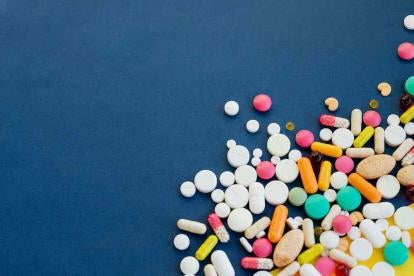On 21 July 2022, the Third Circuit in Perrigo Co. v. AbbVie Inc. affirmed the district court’s judgment that the mutual release in the settlement agreement between the parties from an earlier patent infringement and Hatch-Waxman Act litigation barred plaintiffs’ subsequent antirust claim.1
BACKGROUND
In 2000, Defendants AbbVie Inc. and Abbott Laboratories (Defendants) launched the brand product named AndroGel.2 AndroGel is a topical gel used to treat hypogonadism.3 Co-Defendants, Unimed Pharmaceuticals LLC and Besins Health Care Inc. (Patentees), hold U.S. Patent No. 6,503,894 (“the ’894 patent”), which claims a pharmaceutical composition that treats hypogonadism.4 Plaintiffs, Perrigo Co. and its corporate relatives (collectively, “Perrigo”), produce a generic version of AndroGel 1% (1% generic).5
In 2011, Perrigo filed a New Drug Application (NDA) under Section 505(b)(2) of the Food, Drug, and Cosmetics Act, seeking U.S. Food and Drug Administration (FDA) approval to market the 1% generic.6 Pursuant to the Hatch-Waxman Act, 21 U.S.C. 355(b)(2)(A)(iv), Perrigo sent Patentees notice stating that the 1% generic does not infringe the ’894 patent and that “a lawsuit asserting the ’894 patent against [Plaintiffs] would be objectively baseless and a sham . . . for the improper purpose of, inter alia, delaying [Plaintiffs’] NDA approval.”7
Patentees sued Perrigo for patent infringement within 45 days of receiving notice and triggered the Hatch-Waxman Act’s automatic 30-month stay on the FDA’s ability to approve the 1% generic.8 The parties, however, came to an early settlement in 2012, and they settled the case before Perrigo filed an answer.9 As part of the settlement agreement, the parties agreed to a mutual release of claims.10 In 2013, the FDA approved Perrigo’s 1% generic, and Perrigo then launched the 1% generic in 2014.11
Dissatisfied with the delay that the litigation caused, Perrigo sued Patentees for violation of the Sherman Act in 2020.12 Perrigo alleged that the patent infringement litigation was a “sham” that “delayed [Perrigo’s] launch of its generic version of AndroGel 1%.”13 Perrigo further alleged that “because of the sham lawsuit, Patentees ‘were able to maintain monopoly power’ by ‘delaying the entry of much less expensive competitive generic products.’”14 In response, Patentees claimed that the settlement agreement barred Perrigo’s claim and moved for judgment on the pleadings.15
The United States District Court for the District of New Jersey agreed with Patentees and granted judgment on the pleadings, finding Perrigo’s claim was barred by the release.16 Perrigo appealed the case to the Third Circuit.17
ANALYSIS
Parties Arguments
Perrigo argued (1) that the patent infringement suit was “objectively baseless”; (2) that the patent infringement suit was “brought for an improper purpose and thus was ‘subjectively baseless’”; and (3) that it could have marketed the 1% generic sooner and the patent infringement suit reduced competition for AndroGel.18 As mentioned earlier, Patentees’ primary argument was that the release in the settlement agreement barred Perrigo’s Sherman Act claim.19
Court Analysis20
The Third Circuit focused on when the alleged antitrust injury accrued. The court explained that a plaintiff asserting a substantive antitrust violation arising from a sham litigation must prove that “the challenged lawsuit is ‘causally linked’ to an antitrust injury.”21 The Third Circuit noted that Perrigo’s Complaint does not allege that the injury occurred or could only have been discovered after 27 March 2012, (date of the settlement agreement) and that Perrigo relied on the filing of the patent infringement suit, which occurred 31 October 2011.22 The settlement agreement barred any claims before 27 March 2012.23 Perrigo’s claim accrued prior to that date, and thus, it was released.24
Perrigo argued that its injury accrued after 27 March 2012, because its damages before then were speculative, but the court rejected this argument for two reasons. First, the cause of action accrues when a defendant commits the injury.25 In this case, the injury accrued when Patentees filed the patent infringement lawsuit.26 Perrigo was excluded from the AndroGel market as soon as Patentees filed the lawsuit because of the Hatch-Waxman Act stay.27 Second, Perrigo’s damages as of the date of the patent infringement lawsuit were not too speculative.28 The court provided, “Difficulty ascertaining damages must not be ‘confused with right of recovery.’”29 “The uncertainty of when the FDA would issue approval—or a TE [(therapeutic equivalent)] rating—is thus irrelevant to whether the lawsuit caused delay in Plaintiffs’ ability to enter the market.”30 Accordingly, the speculative damages exception did not apply.31 For that exception to apply, Perrigo would have to show that prior to 27 March 2012, it was uncertain whether it would suffer damages—not simply that it was uncertain how much damage it would suffer.32
CONCLUSION
Perrigo’s claim accrued when Patentees initiated the patent infringement suit, which was before the date of the settlement agreement, and thus, the release in the agreement barred the antitrust claim. If a generic drug company believes that a patent infringement suit has wrongfully caused a delay in its product launch and that the litigation is meritless, it should consider specifically carving out an exception in the settlement agreement. See Aspex Eyewear, Inc. v. Marchon Eyewear, Inc., 672 F.3d 1335, 1345 (Fed. Cir. 2012) (“In a settlement agreement, the parties to an action can determine for themselves what preclusive effect the settlement of the first action will have as to any potential subsequent actions between the parties.”); Pactiv Corp. v. Dow Chem. Co., 449 F.3d 1227, 1231 (Fed. Cir. 2006) (“An exception to the normal rules of claim preclusion exists when ‘[t]he parties have agreed in terms or in effect that the plaintiff may split his claim, or the defendant has acquiesced therein[.]’”); SV Intern. Inc. v. Fu Jian Quanyu Indus. Co., Ltd., 820 F. Supp. 2d 677, 688 (M.D.N.C. 2011) (“However, the court acknowledged that an exception exists if the parties expressly ‘reserve the right to litigate a claim that would otherwise be barred by res judicata.’”).
FOOTNOTES
1 Opinion at 1, Perrigo Co. v. AbbVie Inc., No. 21-3026 (3rd Cir. July 21, 2022), ECF No. 51.
2 Id. at 2.
3 Id.
4 Id.
5 Id.
6 Id.
7 Id. at 2–3.
8 Id.
9 Id.
10 Id.
11 Id. at 4.
12 Id.
13 Id.
14 Id. at 4–5.
15 Id. at 5.
16 Id.
17 Id.
18 Id. at 7.
19 Id. at 5.
20 The Third Circuit recognized that an exception to the Noerr-Pennington doctrine exists when the prior lawsuit was a “mere sham to cover what is actually nothing more than an attempt to interfere directly with the business relationships of a competitor.” Id. at 5–6.
21 Id. at 6.
22 Id. at 7–8.
23 Id. at 8.
24 Id. at 9.
25 Id.
26 Id.
27 Id. at 10.
28 Id.
29 Id. at 11.
30 Id. at 12.
31 Id. at 12–13.
32 Id. at 12.
Madisyn M. Uekawa also contributed to this article.



 i
i


